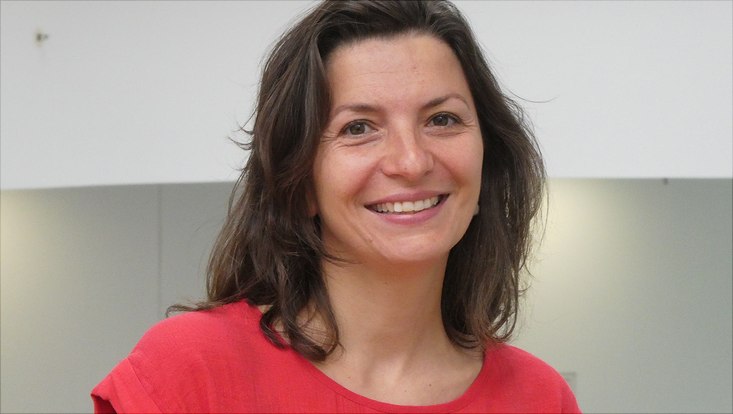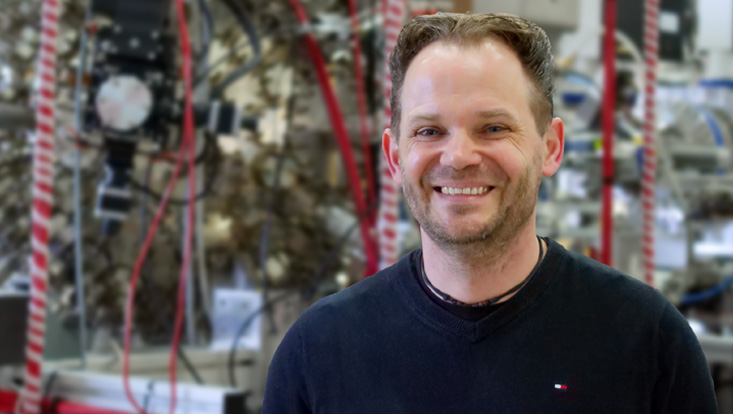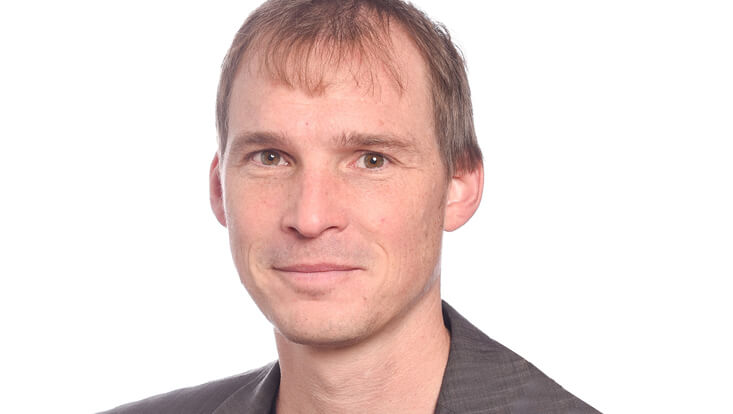Imaging of Matter
A passion for lasers
4 August 2022, by Ingeborg Adler

Photo: private
Until the end of September, Mildred Dresselhaus Guest Professor Dr. Caterina Vozzi will be conducting research at the Bahrenfeld campus. The senior award winner is an expert in attosecond physics and the generation of high harmonics and is working here together with Cluster board member Prof. Francesca Calegari on an advanced attosecond source operating in the soft X-ray range that goes beyond the current state of the art.
Under today's conditions, a scientific career like that of Dr. Caterina Vozzi hardly seems possible, but for a long time it was typical of the Italian scientific system: Caterina Vozzi grew up in Milan, studied there, earned her PhD, and only when she had a permanent position did the current Research Director at the Milan Institute of Photonics and Nanotechnology (CNR-IFN) decide to spend a long time abroad. Somewhere along the way, she fell in love with lasers.
A dedicated teacher taught her about quantum physics
Caterina Vozzi grew up in an eclectic family with three siblings. Her mother, once a teacher of ancient Greek and Latin, her father the owner of a small, successful electronics company, and her siblings being doctors, TV journalists and aspiring lawyers. As an elementary school student, Caterina was interested in plants, animals and chemistry, mixed household cleaners and started reading science books when she was ten. "I was very curious," she says, looking back. So curious, in fact, that she gave a lecture on nuclear energy in elementary school and was proudly given a tour of all the classes by her teacher. At high school, her mother would have liked her to focus on classical languages, but that was out of the question for Caterina, although she still speaks a few words of Greek. She decided on physics, because there one looks at the beginning of everything, everything depends on it. Her interest was encouraged by a dedicated teacher who taught her students about quantum physics. For Caterina, it was just the right thing: "I'm very rational and like challenging topics."
The move to the university was a difficult time personally. She struggled to decide on a field that would eventually define her entire life. Should she study business administration for financial reasons, psychology, or still the subject she really liked? She decided on physics, but then her father got ill and died in her third year at the university.
She tried to find opportunities and combine them in the best way
One professor at the Università degli Studi di Milano still stands out for her today: a theoretician who also showed students the experimental setups, who combined theory and experiment. For her master's thesis, Caterina Vozzi did research in an international group at the European Commission Joint Research Centre (JRC) in Ispra, not far from Milan, and used lasers for the first time for her research in non-linear optics. For her doctorate at the Università degli Studi di Milano, she won a fellowship that allowed her to conduct research in the laboratories of the Politecnico di Milano. "That was great, to have a fellowship and at the same time to be able to use these cool labs at Politecnico. I've always tried to find opportunities and combine them in the best possible way." That's how she was able to work with femtosecond lasers for the first time.
The ERC Grant started a new chapter in her career
After the postdoc and the first permanent position at CNR-IFN, the time had come for a longer stay abroad. For eight months, Caterina Vozzi did research at the National Research Council of Canada in Ottawa in what she considered "the best group in the world in the field of attosecond research." She enjoyed the experience in the very supportive group and broadened her view. When she got back to Milano, for the first time, she used femtosecond lasers to study the dynamics of molecular orbitals with a new experimental technique. During this time, she produced a landmark publication, based on which she was able to secure an ERC Starting Grant in 2012. "This grant started a new chapter in my career. I became visible, I built my own group, and I had several labs." She expanded her research to solid-state dynamics, filling a gap in her field. Ultrafast THz spectroscopy was not well established in Italy at that time, she said. From then on, Caterina Vozzi made strategic decisions.
Things also changed in her private life: In 2014, Caterina Vozzi met a new partner in the lab and in 2017 she had her daughter Giulia, with whom she spends a lot of time outdoors, collecting plants or riding her bike. However, her work group had also grown a lot, so there was not enough time left for teaching.
Large laser facilities now enable the step to the next level
What she particularly appreciates about your work? "I've been doing research in the field for 20 years, and I've seen an exciting evolution with the development of attosecond research. Now we're stepping to the next level with the large facilities like the European XFEL, and it's very attractive to do experiments there." Collaborations are another aspect: "You can learn so much by working with colleagues. We often have a high level of technical competencies, but we are not trained in management and leadership skills." That's something you learn from other people, she says.
Caterina Vozzi values the Mildred Dresselhaus program as a very good opportunity for collaborations. She has long cooperated with researchers in the cluster, such as Prof. Franz Kärtner, Prof. Jochen Küpper and Prof. Francesca Calegari. The two Italians were already in the lab together during their postdoc and doctoral periods. At the age of only 43, at a very early stage in Italy, Caterina Vozzi became Research Director at her institute. "I have a lot of freedom there. I saw opportunities and I grabbed them."


